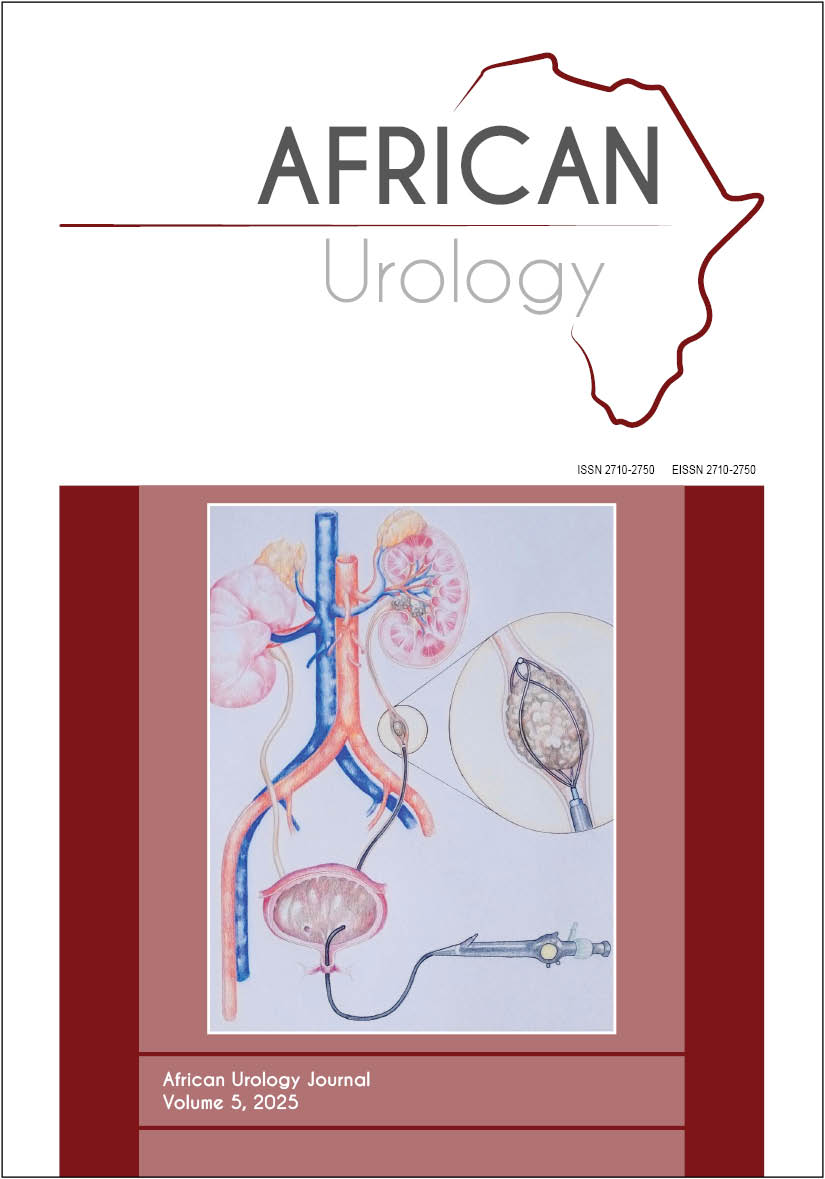Outcome of urological injuries associated with pelvic trauma in two hospitals in Douala, Cameroon
Main Article Content
Abstract
Introduction: Urological injuries are anatomical alterations resulting from an attack on the urogenital tract. Delayed diagnosis can lead to adverse outcomes. Their management remains challenging, controversial, and multidisciplinary. This study aimed to outline the epidemiological, clinical, therapeutic, and evolutionary particularities of urological injuries associated with pelvic trauma in Douala.
Methods: We conducted a retrospective study at the Douala General Hospital (DGH) and Laquintinie Hospital of Douala (LHD) from 1 January 2012 to 31 December 2022. We included records of patients with pelvic trauma with a clinical, radiological, and/or postoperative diagnosis of associated urological lesions, managed and followed up during the study period. Our survey form contained sociodemographic, clinical, therapeutic, and follow-up information.
Results: We collected 121 records of patients aged 4–77 years. The mean age was 32.61 ± 13.43 years, with 92 male patients (76%). Students were the most affected (26.4%). Road traffic accidents were the most frequent (76.9%). Clinical signs were haemodynamic instability (28.9%), urethrorrhagia (25.6%), haematuria (24.8%), and acute urinary retention (15.7%). Tile B classification was the most common type of pelvic fracture (53.7%). Urethral injury was the most frequent (62.8%). Orthopaedic treatment was the priority (74.4%). Suprapubic cystostomy was performed urgently (53.7%), and endoscopic internal urethrotomy was performed electively (55.8%). Common complications were decubitus ulcers (6.6%) and urethral strictures (41.7%) in the long term. The mortality rate was 4.1% (n = 5). The longterm survival rate was 90.8%.
Conclusion: Urological injuries associated with pelvic trauma are uncommon and occur in young male patients. Urethrorrhagia and haematuria are almost always present. Their long-term prognosis is favourable.
Article Details

This work is licensed under a Creative Commons Attribution-NonCommercial 4.0 International License.
